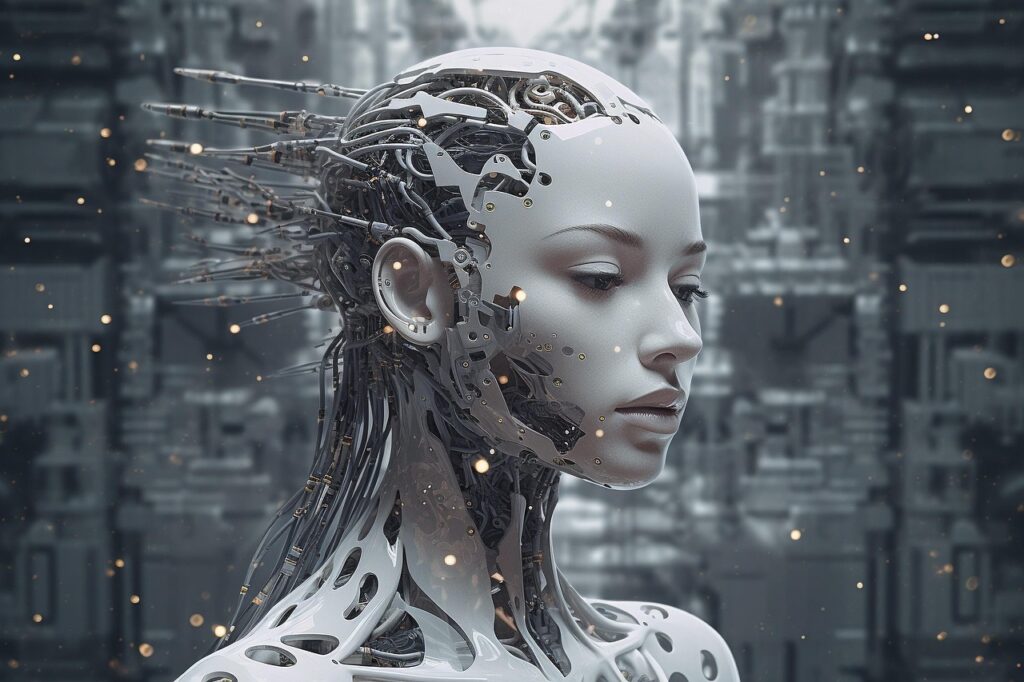
🇮🇳 AI in India Today: Trends, Opportunities & Challenges -92% Using AI
1. Rapid Adoption Across Sectors
A recent Boston Global Group report reveals a staggering 92% of Indian employees are actively using generative AI tools—vastly outpacing the global average of 72% (atlanticcouncil.org). Meanwhile, according to Emeritus, nearly 96% of professionals are engaged with AI in their daily workflows—again higher than counterparts in the U.S. and U.K. (atlanticcouncil.org).
This widespread integration spans industries: IT firms are pivoting from invention to application, embedding AI into enterprise solutions and automating core workflows ; hospitals like Apollo are underwriting AI investments to automate paperwork and augment diagnostics (reuters.com); and BPO hubs are leveraging AI chatbots and accent translators to fine-tune service delivery (washingtonpost.com).
✅ What’s exciting: India is riding a generative AI wave, reshaping productivity, customer experience, and operational efficiency.

2. Focus on “Desi AI” and Native-Language Tools
Diverse markets like Indian MSMEs often find Silicon Valley AI tools mismatched to their needs and budgets (economictimes.indiatimes.com). This has ushered in a boom in “Desi AI”—locally built, cost-effective solutions.
A notable example: AI4Bharat, backed by Nandan Nilekani, is building Indian language models supporting speech-to-text, translation, and agriculture chatbots (ey.com, timesofindia.indiatimes.com). Similarly, the government’s IndiaAI Mission has inked a deal with OpenAI to launch a multilingual “OpenAI Academy,” training thousands of teachers by rolling out API credits and resources in Hindi and four regional languages (en.wikipedia.org).
✅ Why this matters: Tailored AI in India tools enable broader inclusion—from small businesses to rural education—addressing language barriers and cost constraints.
3. Government Push & Public-Sector Innovation
Governments are aggressively spearheading AI integration. Andhra Pradesh is launching an AI‑based Police Operating System, deploying fine-tuned models for fingerprint ID and evidence analysis by year’s end (timesofindia.indiatimes.com). At a national level, India’s electronic ministry unveiled the IndiaAI Safety Institute, aiming to standardize safe and ethical AI grounded in Indian datasets (en.wikipedia.org).
Prime Minister Modi’s $1.2 billion, five-year AI strategy provides GPUs and funding for LLM development (ft.com), while education departments are rolling out smart boards, robotics labs, and AI-powered classrooms in Delhi and Gujarat (timesofindia.indiatimes.com).
✅ Why it’s huge: Strategic public investment builds the infrastructure, regulation, and skills base essential for broad-based AI adoption.
🌟 The Upside: What’s Working Well?
AI in India Today - Boosting Productivity & Economic Potential
Studies predict a $500 billion boost to India’s GDP by 2035 through smart AI strategies—a potential 1.3% annual growth bump (economictimes.indiatimes.com). In IT and BPO, AI is shortening customer wait times, reducing manual labor, and enabling new roles in data labeling and model training (washingtonpost.com).
The healthcare AI market is also surging, with an expected compound annual growth rate (CAGR) of 40.6%, reaching approximately $1.6 billion by 2025 (indiaai.gov.in).

AI in India Today - Democratizing Access & Inclusion
Generative AI is reaching classrooms and farms. Rural ed-tech startup MindCraft uses AI for personalized learning pods and mentorship (arxiv.org). Meanwhile, “Dhenu 1.0”, India’s first agriculture-focused LLM, empowers farmers with voice-based vernacular assistance in Hindi, Hinglish, and more—aid built with local collaboration (en.wikipedia.org).
Such initiatives translate into real-world impact: bridging rural-urban divides, supporting women farmers, enriching classroom experiences, and preserving linguistic diversity.
⚠️ The Cautionary Side: Challenges Ahead
Job Displacement & Deskilling
According to Harvard Business Review via Wikipedia, up to 30% of jobs in writing, coding, and imaging could be affected by AI-driven automation (en.wikipedia.org). Indian IT may see large-scale offshoring of 69% of formal jobs being automated by 2030 (en.wikipedia.org). In BPOs, while agents get AI copilot support, entry-level tasks are vanishing—raising fears of automation-driven unemployment (washingtonpost.com).
KPMG reports that globally, 80% of people fear negative AI outcomes, including loss of human connection, misinformation, and privacy breaches; among these, 42% believe benefits don’t outweigh the risks (assets.kpmg.com).
Talent, Infrastructure & R&D Gaps
A Carnegie Endowment report flags India’s key shortcomings: insufficient top‑end AI talent, lack of comprehensive datasets, and underinvestment in R&D—hindering global competitiveness . While startups and public bodies are building infrastructure, India trails behind in AI research output and patents (ft.com).
Ethical, Sustainability & Governance Concerns
AI’s environmental cost is non‑trivial—GPU-powered models consume vast energy, raising carbon footprint concerns . Bias and privacy risks loom large: Andhra Pradesh is explicitly building legal frameworks around data and LLM usage (timesofindia.indiatimes.com). Meanwhile, industry surveys highlight barriers like bias, compliance, and ethical lapses (protiviti.com).
🧭 Striking a Balance: What’s Next?
AI in India Today - Invest in Skills & Safety
India must reinforce public-private efforts—like FutureSkills Prime and university initiatives—to build AI fluency. The IndiaAI Safety Institute and state-level ethics bodies can guide responsible AI integration (atlanticcouncil.org).
AI in India Today - Embrace Frugal, Inclusive Innovation
Solutions that are budget‑friendly, localized, and language‑aware (like Dhenu and AI4Bharat) offer scalable models. Governments and donors should direct funding toward such “frugal AI”.
AI in India Today - Align Policy, Infrastructure & Standards
India needs cohesive policy: data sovereignty laws, environmental benchmarks for AI infrastructure, and incentive schemes targeting underrepresented regions and sectors. Smart deployment in agriculture, urban planning, healthcare, and policing can provide generational dividends.

AI in India Today - Final Take
India is entering an AI renaissance: tools are being adopted swiftly, transformations are underway in industries from healthcare to governance, and homegrown “Desi AI” solutions promise scalable inclusion. Yet the path is fraught with automation anxieties, data and ethical shortcomings, and gaps in advanced R&D and infrastructure.
For India to harness AI’s full potential—accelerating productivity, elevating public services, and bridging socio-economic divides—it must pursue a dual track: empowering innovation while ensuring safety, equity, and human-centered design. With targeted investments, robust governance, and mindful deployment, AI can become a cornerstone of India’s next growth story.
